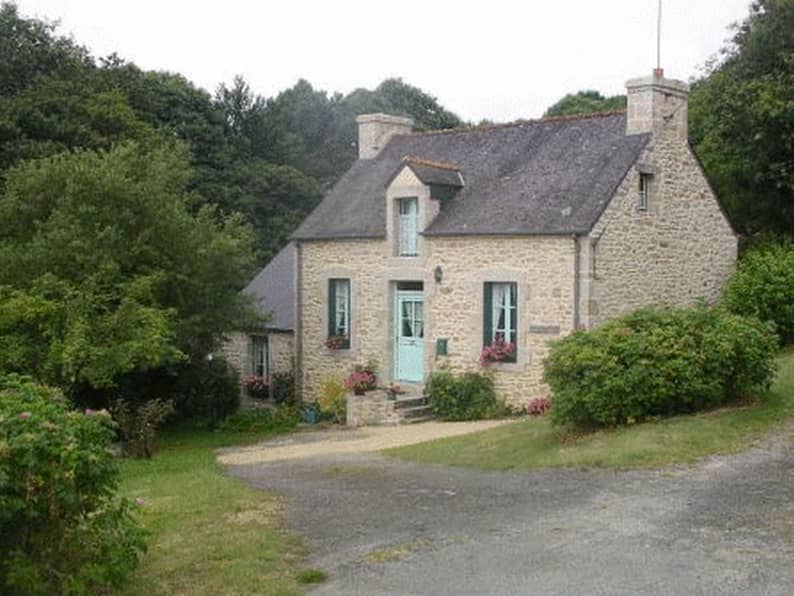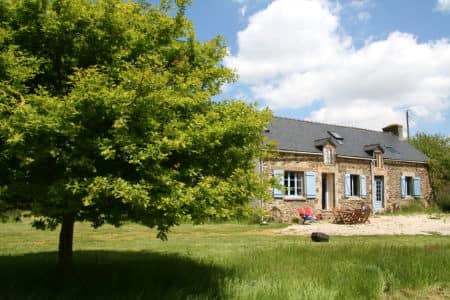Occupying about a third of the French coastline, with soaring cliffs, tiny rugged bays and vast swathes of sandy beaches, Brittany is a region defined by its shores. Along with the ruggedness and ancient traditions of the Finistère peninsula, classic fishing villages offer wonderful seafood straight off the boat and life here slows down a few gears.
Brittany has a distinctly unique feel when compared to the rest of France. Native Bretons have their own language, customs, cathedrals and festivals. In many ways it’s like a bigger version of Cornwall but with more sun. One of the reasons for this is that historically, the region became home to many Cornish settlers fleeing the tyrannous kings in England.
Coastal Brittany
The coastline around Brittany ranges from beautiful jagged coastline with spectacular cliffs and sandy beaches, to the calmer Gulf of Morbihan, an inland sea dotted with islands that have become a great haven for seabirds and a paradise for sailors Right the way along the coastline there are great sandy beaches, seaside resorts, unspoilt fishing harbours and some great coastal walks. If your idea of a perfect Breton bolt-hole is a traditional fishing village with lots of superb seafood restaurants, Saint Briac sur Mer is a good spot to aim for. Alternatively if it’s sweeping bays and fine golden sandy beaches you’re after, Saint Cast le Guildo has alively atmosphere with lots of cafés, restaurants and shops.
Inland Brittany
Inland, the beautiful countryside is shrouded in ancient myths and legends and there are lots of romantic chateaux and picturesque towns to explore. The picture perfect village of La Gacilly is so pretty it could feature on the cover of any chocolate box, whilst the medieval village of Moncontour, with its’ traditional colombage buildings at every turn, is officially recognised as one the most beautiful villages in France.
A Dramatic Backdrop
If you really want to get away from it all, it’s hard to beat far-flung Finistère with its coastline of dramatic fjord-like inlets and National Park hinterland. Three popular spots are the historic port town of Morlaix, the medieval town of Quimper and the inland “enchanted forest” area of Huelgoat.
Weather & Travel Connections
Whilst the region may have many similarities with Cornwall, the southern areas of Brittany have a noticeably better climate. The area around Vannes has the same average number of sunny days as Toulouse in the south of France. Despite it’s westerly location, Brittany is not difficult to reach from the UK – There are the ferry crossings to Roscoff, St-Malo or Cherbourg, flights into one of the three airports or alternatively, many people opt to drive from the Channel Tunnel which takes around six hours through the rolling Normandy countryside. A new flight route has just launched that is worth bearing in mind if you're travelling to the area. French airline Fly Kiss, has launched a new route (with civilised flight times!) three times a week between Luton and Brest.
The Property Market
The value of a property in Brittany is a fraction of the price of comparable properties in the UK and average prices hover about the €150,000 (£120,000) mark.
A three bedroomed longère (long house) might be priced at €150,000 in a rural location and the same house could be €500,000 close to a major town centre. A longère is the quintessential Breton home popular with buyers. Originally owned by small farmers, these granite properties have their windows and doors on the sides facing south or west under slate roofs. Immense stone fireplaces are common, as well as attractive lintels and arches reclaimed from grander homes. In the towns you will find more maisons de maitres – doubly-fronted, elegantly proportioned homes with five or six bedrooms that cost between €300,000 and €400,000 in Brittany (half the price of comparable properties in the Dordogne).
In a typical port town you will pay about €85,000 for a renovation project, €140,000 for a village property or €300,000 to €400,000 for a home with a sea view. The Cotes-d’Armor has many seaside villages and is an area popular with buyers and tourists for its good transport links as much as the beaches of its emerald and pink coasts (it is by far the most popular Brittany department for holiday lets on Tripadvisor).
Whilst Finistère still offers exceptional value for money, the average property price in the Côtes-d’Armor is still a modest €122,000. The department of Morbihan, the sunniest coast around the Bay of Biscay, beloved of Parisians has the highest average prices of the Brittany departments. The Parisians favour the medieval towns of Vannes and Auray, and the cosmopolitan Rochefort-en-Terre, while inland Josselin is favoured by British buyers looking for a pied-à-terre in the region.
While the average UK buyer spends €100,000 in Brittany, you get even more for your money if you head inland. In central Brittany – where the four departments meet around Carhaix – the average spend on a two-bedroomed holiday home is €50,000 to €70,000.
Here's the pick of our favourite Brittany cottages and farmhouses on the market this Spring:








